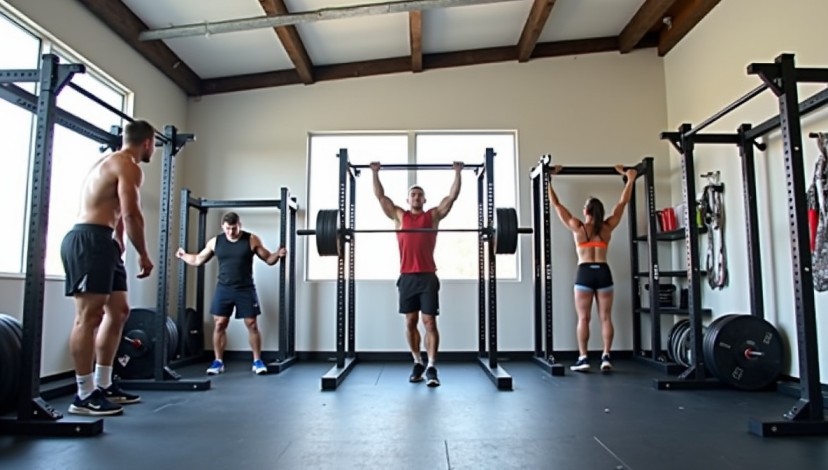The soleus muscle is a powerful muscle located in the lower leg, playing a key role in walking, running, and maintaining balance. When this muscle experiences pain, it can disrupt daily activities, making it difficult to move comfortably. Soleus muscle pain can occur due to various reasons, such as overuse, strain, or underlying health conditions. Understanding its causes and symptoms is essential for effective treatment and prevention.
Key Points:
- The soleus muscle is crucial for lower leg movement and stability.
- Pain in this muscle can result from excessive use, poor stretching, or medical conditions.
- Proper treatment and prevention strategies can help reduce discomfort and improve mobility.
What Causes Soleus Muscle Pain?
Soleus muscle pain can arise from different factors. Some common causes include:
- Overuse and Strain: Activities like running, jumping, or prolonged standing can put excessive pressure on the soleus muscle, leading to pain. This is especially common in athletes and individuals who engage in repetitive leg movements without adequate rest. When the muscle fibers are overworked, microscopic tears can occur, resulting in inflammation and discomfort.
- Muscle Cramps: Dehydration, low electrolyte levels, or inadequate stretching can cause muscle cramps in the soleus. These cramps often result from imbalances in minerals like potassium, magnesium, and calcium, which play a vital role in muscle contraction and relaxation. When these minerals are deficient, the soleus muscle may contract involuntarily, causing sharp pain and stiffness.
- Injury or Trauma: A direct blow or sudden movement can result in muscle tears or strains. Accidents such as tripping, falling, or misstepping can place undue stress on the muscle, leading to sprains. The severity of an injury can vary from minor discomfort to complete muscle rupture, requiring immediate medical attention.
- Tendonitis: Inflammation of the tendon connected to the soleus muscle may lead to pain and stiffness. Tendonitis is commonly caused by repetitive stress or poor biomechanics, such as improper walking or running posture. Over time, this condition can worsen, limiting the flexibility and function of the lower leg.
- Poor Footwear: Wearing unsupportive shoes can alter foot mechanics, increasing strain on the lower leg muscles. High heels, worn-out sneakers, or shoes with inadequate arch support can contribute to improper weight distribution, forcing the soleus muscle to work harder and potentially leading to pain.
- Nerve Compression: Sometimes, nerve-related issues can cause pain in the soleus muscle. Conditions like sciatica, where the sciatic nerve is compressed, can lead to radiating pain in the lower leg, affecting the soleus muscle.
- Blood Circulation Issues: Conditions like deep vein thrombosis (DVT) or peripheral artery disease (PAD) can cause pain in the lower leg muscles, including the soleus. These issues may lead to swelling, redness, or a heavy feeling in the legs, requiring immediate medical intervention.
How to Identify Symptoms of Soleus Muscle Pain?
Recognizing the symptoms of soleus muscle pain can help determine the best course of action for relief. The symptoms may include:
- Aching or Sharp Pain: Pain may be mild or severe, depending on the cause of the discomfort. A sharp pain may indicate an acute injury, while a dull ache might suggest chronic overuse.
- Swelling and Inflammation: A strained or overworked muscle can become swollen and tender. This can be accompanied by redness and warmth in the affected area.
- Limited Range of Motion: Difficulty in moving the ankle or foot due to muscle tightness or pain. This can make it challenging to perform simple activities such as climbing stairs or standing on tiptoes.
- Pain During Physical Activity: Symptoms may worsen while walking, running, or standing for long periods. Individuals may experience relief during rest but a return of discomfort when resuming movement.
- Cramping or Stiffness: The muscle may feel tight, making it hard to flex the foot properly. Nighttime leg cramps are also common in individuals experiencing muscle pain.
- Tingling or Numbness: In cases where nerve compression is involved, individuals may feel tingling sensations or numbness extending from the calf to the foot.
- Discoloration and Warmth: If the affected area appears red, purple, or feels unusually warm, it could indicate an underlying circulatory issue or severe muscle inflammation.
How to Treat Soleus Muscle Pain Effectively?
Managing soleus muscle pain involves various treatment options, ranging from home remedies to medical interventions. Some effective treatments include:
| Treatment Method | Description |
| Rest and Recovery | Allowing the muscle to heal by reducing physical activity. |
| Stretching and Strengthening | Gentle stretches and exercises to improve flexibility and strength. |
| Ice Therapy | Applying ice packs to reduce swelling and pain. |
| Massage and Foam Rolling | Using self-massage techniques to release tension in the muscle. |
| Pain Relief Medication | Taking over-the-counter anti-inflammatory drugs to ease discomfort. |
| Compression Therapy | Wearing compression sleeves to improve blood flow and reduce swelling. |
Reminder: Always consult a healthcare professional before starting any treatment, especially if the pain persists or worsens.
How to Prevent Soleus Muscle Pain?
Preventing soleus muscle pain is crucial for maintaining mobility and avoiding future discomfort. Here are some key prevention methods:
- Proper Warm-Up and Cool-Down: Always stretch before and after exercise to prepare muscles for activity.
- Stay Hydrated: Drinking enough water helps prevent muscle cramps and tightness.
- Wear Supportive Footwear: Choose shoes that provide adequate arch and heel support.
- Strengthen Leg Muscles: Incorporate strength training exercises to enhance muscle endurance.
- Avoid Overuse: Gradually increase workout intensity to prevent excessive strain on the muscle.
- Maintain a Healthy Diet: A balanced diet rich in vitamins and minerals supports muscle function and recovery.
When to Seek Medical Attention for Soleus Muscle Pain?
While mild pain can be managed at home, severe cases require medical attention. Consider seeing a doctor if:
| Symptoms | Medical Concern |
| Severe Swelling | Could indicate muscle tear or deep vein thrombosis. |
| Persistent Pain | Lasting more than two weeks despite rest and treatment. |
| Loss of Mobility | Difficulty in walking or flexing the foot. |
| Pain with Fever | May signal an infection or underlying condition. |
| Bruising or Discoloration | Possible muscle rupture that needs medical evaluation. |
Note: Ignoring persistent pain can lead to complications, so it’s important to address symptoms early.
Conclusion
Soleus muscle pain can be frustrating, but understanding its causes, symptoms, and treatments can help in effective management. Simple remedies like rest, stretching, and proper footwear can alleviate discomfort, while severe cases may require medical attention. By taking preventive measures, individuals can maintain healthy muscle function and avoid recurring pain.
FAQ’s
- What Does Soleus Muscle Pain Feel Like?
- It can range from mild aching to sharp pain, often worsening with physical activity.
- How Long Does It Take for Soleus Muscle Pain to Heal?
- Recovery time varies, but mild strains may heal in a few days, while severe injuries can take weeks.
- Can I Exercise with Muscle Pain?
- Light stretching is okay, but intense activities should be avoided until pain subsides.
- What Are the Best Stretches for Soleus Muscle Pain?
- Calf stretches, toe raises, and ankle flexion exercises help relieve tightness.
- When Should I See a Doctor for Muscle Pain?
- Seek medical attention if the pain persists, worsens, or is accompanied by swelling and limited movement.




